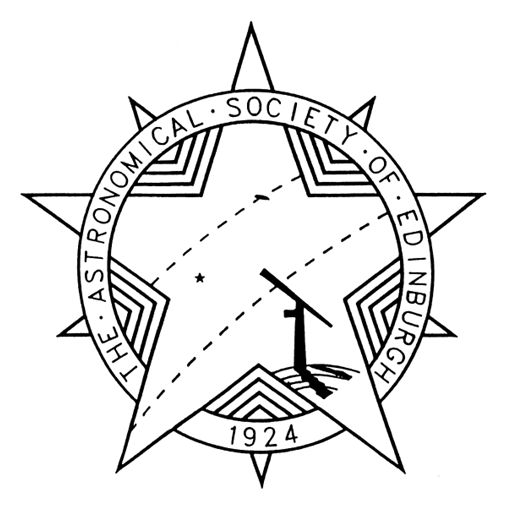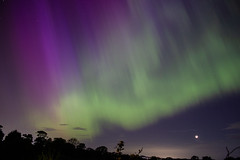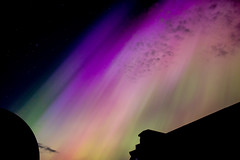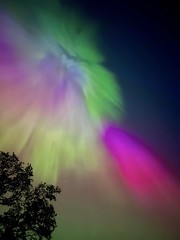Why the Star of Bethlehem did not exist
Almost every Christmas an astronomer attempts to explain the Star of Bethlehem. The Sky at Night team did so in their programme broadcast on 2015 Dec 30. They concluded that it was most likely to have been a comet and showed Giotto’s painting of the Nativity with a comet in the sky (see below). Other artists portraying the Nativity usually just showed a distant star.
I am a member of the ASE because I am interested in astronomy and cosmology. But I also have an abiding interest in the origin of Christianity and the life of Jesus. This is the result of a youth misspent as a Christian, a religion I abandoned a long time ago. This interest deepened until I found that I could write a book on the subject, which covers all aspects of the gospel story (see The Rise and Fall of Jesus, by Steuart Campbell). Necessarily the book examines Jesus’ birth and the story of the Star of Bethlehem.
The story comes only from Matthew’s Gospel, chapter 2, as follows (Authorised version):
Now when Jesus was born in Bethlehem of Judæa in the days of Herod the king, behold, there came wise men from the east to Jerusalem, saying, Where is he that is born King of the Jews? for we have seen his star in the east, and are come to worship him. When Herod the king had heard these things, he was troubled, and all Jerusalem with him. And when he had gathered all the chief priests and scribes of the people together, he demanded of them where Christ should be born. And they said unto him, In Bethlehem of Judæa: for thus it is written by the prophet,…Then Herod, when he had privily [secretly] called the wise men, enquired of them diligently what time the star appeared. And he sent them to Bethlehem, and said, Go and search diligently for the young child; and when ye have found him, bring me word again, that I may come and worship him also. When they had heard the king, they departed; and, lo, the star, which they saw in the east, went before them, till it came and stood over where the young child was.
Several things about this account should trouble astronomers. Does the account mean that the magi saw the ‘star’ in the east, i.e. rising, and followed it during a night as it travelled west? Or does it just mean that, being in the east themselves (Arabia?), they saw the ‘star’ in the west, over Palestine. If the latter, the ‘star’ would have set before they even came to Jerusalem. It is not clear.
The question of the time of the appearance of the ‘star’ is also obscure. No answer is given to this question and one wonders how it could be answered. Herod seems to have thought it significant, but we are not told why.
Most puzzling of all is the idea that the magi could follow the ‘star’ to identify a particular building in Bethlehem. Astronomers especially know that a celestial object or phenomenon cannot be identified with a particular location on the surface of the earth. Perhaps they are ignorant of this account or choose to ignore it as they search for any celestial phenomenon that might explain it. The entire confused account should alert astronomers to the possibility that it is unreliable and that they might not be looking for a real ‘star’.
It is important to understand that the two accounts of Jesus birth, one here in Matthew and another incompatible one in Luke’s Gospel are additions to the first Gospel, that of Mark. Both Matthew and Luke, took Mark as their basis and made additions to give Jesus an origin and background commensurate with his later deification and to elevate him the status of a Saviour God at least equal to contemporary such gods. The obvious comparison is with Mithras, the god of the Roman Army. Indeed, Matthew may have borrowed from the Mithraic books, which, it is reported, tell how, when Mithras was born, a star fell from the sky and was followed by Zoroastrian priests called ‘Magi’ on the way to worship him (by the way, Mithras birthday was Dec 25!).
Neither Mark’s nor John’s Gospel know anything about Jesus’ origin. Biblical scholars believe that the entire Birth Narratives of Matthew and Luke are inventions, for the purpose explained above.
Matthew in particular, writing for the Jewish community in Alexandria, was at pains to show fulfilment of Jewish prophecy, or at least to show links between Jesus’ origin and the Jewish Scriptures. Consequently he may have borrowed from a Jewish apocryphal book like The Testament of Levi (one of the Jewish patriarchs). In that book, in a description of the last days (18:3), one finds the statement that ‘his star shall arise in heaven as of a king. Lighting up the light of knowledge as the sun the day’. Also, in 24:1, the statement that ‘shall a star arise to you from Jacob in peace’. One can even see forecast of a star in Numbers 24:17 (‘There shall come a star out of Jacob’). In the Old Testament, the word ‘star’ often stood for the Messiah.
Jewish readers would easily see the connection and be persuaded that Jesus really was the Messiah, the point Matthew was trying to convey. I understand that The Talmud, a central text of Rabbinic Judaism, contains a statement that ‘when the Messiah is to be revealed a star will rise in the east…and seven other stars round it will fight on every side’.
It is common knowledge that ancient peoples saw celestial phenomena as signifying or celebrating some important event, such as the birth of a king, on Earth. It is not so obvious, but equally logical, that an important historical Earthly event must somehow have been reflected in the sky. Consequently, even though nothing appeared at the time, such an event was easily invented to convince people that the event described had great significance. Miraculous events were often invented to accompany the births or deaths of Roman Emperors. Such was the case here. Believing that Jesus was the expected Messiah, Matthew invented a celestial event to convince his readers of Jesus’ importance.
Astronomers even make a mistake about the date. Our year dating system was invented in 525 by a Scythian monk called Dionysius Exiguus. He based it on the assumed age of Jesus, by then thought to be in Heaven (we still keep to this system which was adopted by Bede in the 8th century). However, astronomers and many others are misled by the reference in Matthew’s account to king Herod. They assume that it must be Herod the Great, known for his cruelty and who died in 4 BCE. Consequently, they look for a celestial phenomenon prior to that date, perhaps 5 or 6 BCE and sometime they find one. However, ‘Herod’ was a family name and all of Herod the Great’s sons also carried the name. So merely calling a king ‘Herod’ was not sufficient identification and Dionysius’ calendar should not be accused of making a mistake. He almost certainly worked from Luke’s account of when John the Baptist began to preach (chapter 3). Note the reference to ‘Herod the Tetrarch’, whose name was actually ‘Antipas’:
1 Now in the fifteenth year of the reign of Tiberius Cæsar, Pontius Pilate being governor of Judæa, and Herod being tetrarch of Galilee, and his brother Philip tetrarch of Ituræa and of the region of Trachonitis, and Lysanias the tetrarch of Abilene
2 Annas and Caiaphas being the high priests, the word of God came unto John the son of Zacharias in the wilderness.
Also a statement about the age of Jesus:
23 And Jesus himself began to be about thirty years of age
Tiberias’ 15th year was the year we call, using Dionysius’ system, 28 CE. Making allowances for the period between the appearance of John and Jesus’ mission, his birth must be place in the year 1 BCE (there was no year zero). There is no reason to abandon Dionysius’ calendar and every reason to eschew the idea that he made a mistake. Consequently, even if there had been a celestial phenomenon at the time of Jesus’ birth, astronomers have been looking in the wrong time.
The mistake made by astronomers is a classic example of ‘the law of the instrument’ or over-reliance on a familiar tool. It means that astronomers have been looking at the biblical record only from their own point of view, ignorant of the fact that the record does not lie within their competence. There are other examples of experts in one discipline believing that they can explain something that lies in another discipline. In this case, astronomers have seen what appears to be an astronomical record and assumed that they would be able to explain it. But the star is imaginary. It never really existed.
Please remember this when you next hear, as you will, of an astronomer trying to explain The Star of Bethlehem.
Steuart Campbell
This article is based on a talk given to the ASE by Steuart Campbell on the 8th of January 2016. Steuart has been a member of the ASE for many years and our thanks go to him for sharing with us his theory on the Star of Bethlehem.
Posted on 01/02/2016, in Uncategorized and tagged ASE, Astronomical Society of Edinburgh, Comet, Jesus, Nativity, Star of Bethlehem, Steuart Campbell. Bookmark the permalink. 1 Comment.





05.02.16
I feel the need to respond to Steuart Campbell’s article on the Star of Bethlehem with a different viewpoint, but a similar interest in astronomy. After all it is a common bond.
The Sky at Night TV programme was carefully researched, thoughtfully presented and at no point did they say it either did happen or didn’t. This has been a phenomenon of debate for two thousand years and may well have some unknown explanation. Several options from around 5BC (the approximate date of the birth of Christ) were discussed at length with observations having been made and documented in detail. The Bible is to be thoughtfully considered and studied as many of the stories are myths and not scientific facts they can be seen as a story telling an important truth, but not to be taken literally (Genesis 1-3 being examples).
Dismissing the Star of Bethlehem because it was written about without our far more scientific knowledge of astronomy than the authors of the Gospels is denying what has been considered history by many generations. We have a far better understanding of the cosmos than in ancient times, but to denounce their way of writing is to misunderstand their way of thinking. Also, to ignore all the evidence from various cultures of astronomical events in the past is a bit arrogant.
If Campbell was put off Christianity due to some unfortunate event or by a person in his past I feel sorry for him. Not all Christians are terribly good examples of the type of behaviour their faith requires of them. Also, unfortunately some are blinkered by a fundamentalist belief that will not allow them to see the wonders of the universe that science can now reveal to us by using our brains.
John Polkinghorne a former Cambridge professor of physics in his book ‘Quarks, Chaos and Christianity’ explains how his understanding of science enforces his understanding of God. ‘We should remember that almost all people, at all times and in all places have had some form of religious belief. The widespread unbelief of the contemporary western world is a limited phenomenon, both historically and geographically. Just as the tone deaf should consider seriously the possibility that those who enjoy music are onto something worthwhile, so should Western unbelievers consider that they are missing something vital’. *
We may well be made in the image of God, but evolution has allowed us to get us to where we are today, and to use this wonderful brain to unravel our universe.
‘Science without religion is lame, religion without science is blind’. Albert Einstein.
Yours sincerely
Angus Self.
*Quarks Chaos and Christianity. Triangle books 1994 p.14